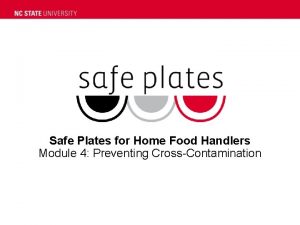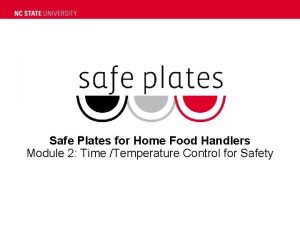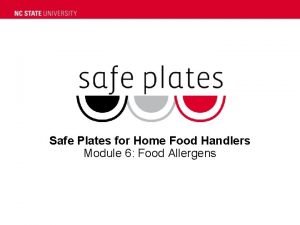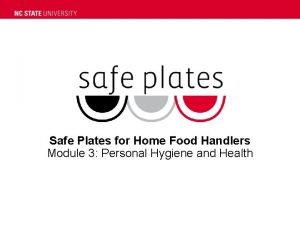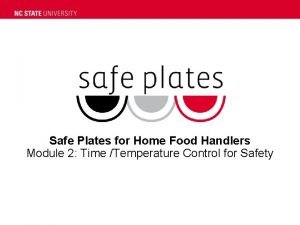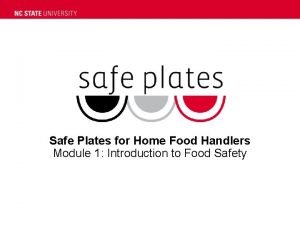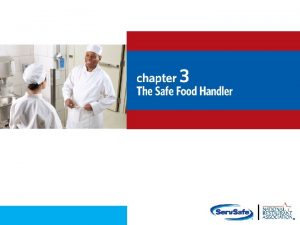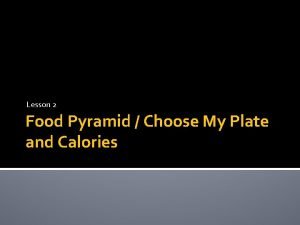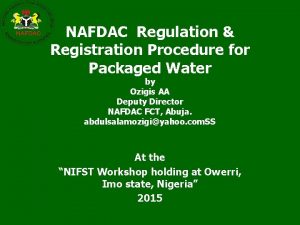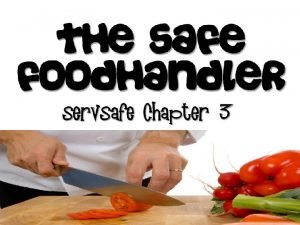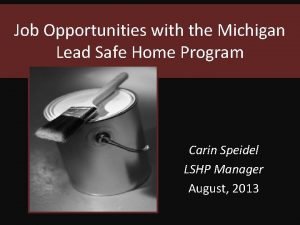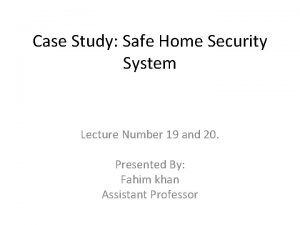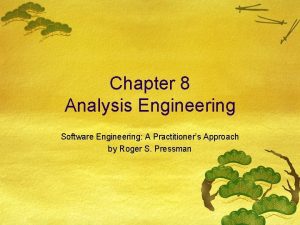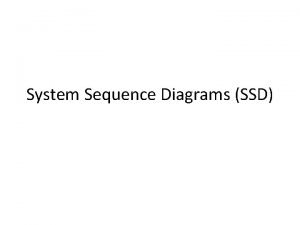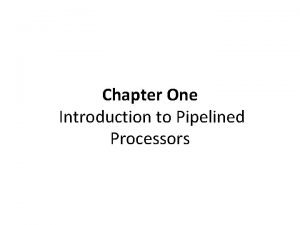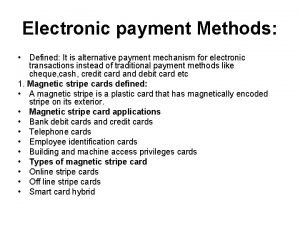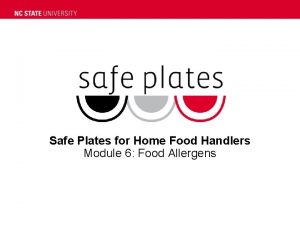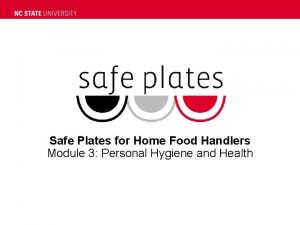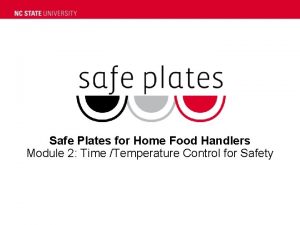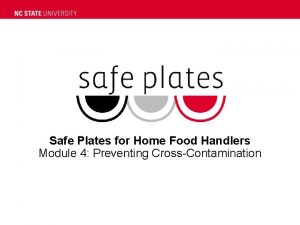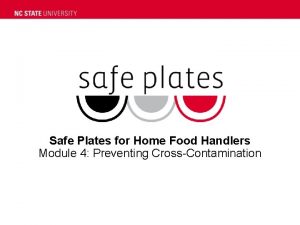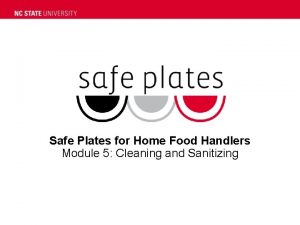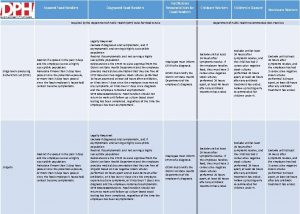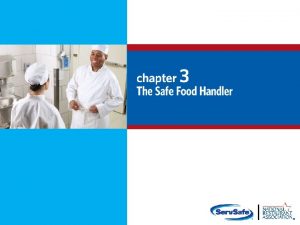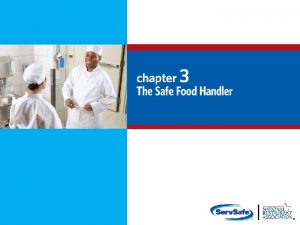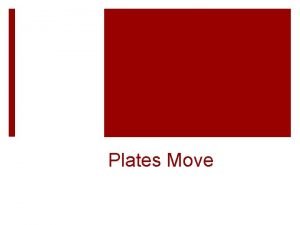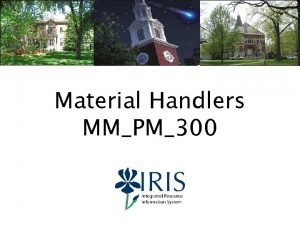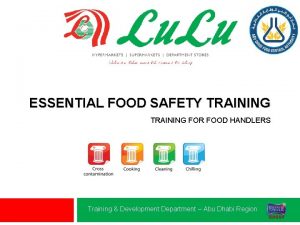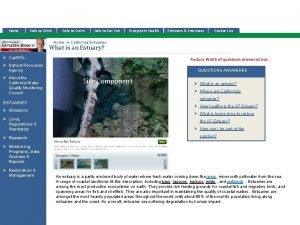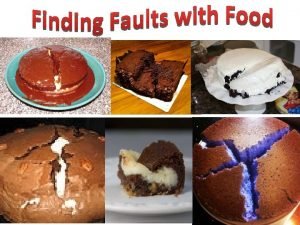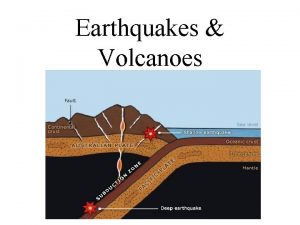Safe Plates for Home Food Handlers Module 5

























- Slides: 25

Safe Plates for Home Food Handlers Module 5: Cleaning and Sanitizing

Case Study

What Happened Oregon and Washington, 2010 • Nine members of an Oregon soccer team became ill with Norovirus • All who got sick ate prepacked cookies and chips, as well as grapes stored in a reusable grocery bag • After investigation, health inspectors found out the bag had been stored in the bathroom used by the first person who got sick

What They Found • Vomit can mist up to 30 feet • The bag and snacks were contaminated just by being in the same room

Learning Objectives • Understand the difference between cleaning and sanitizing • Define food contact surfaces and know when and how to clean and sanitize them • Identify how to clean and sanitize utensils and equipment properly using mechanical and manual washing • Use and store wiping cloths appropriately • Use chemicals according to manufacturer instructions and store in properly labeled containers in designated areas

Key Terms • Clean – removal of dirt or food residue • Food-contact surface – a surface of equipment or a utensil with which food normally comes into contact or from which food may drain, drip or splash • Hand-contact surface – any surface touched by clean or dirty hands

Key Terms • Contact time – period of time sanitizer must be in contact with a surface to work properly • Sanitize – reduces the number of disease-causing microorganisms on equipment and utensils to acceptable public health levels • Sanitizer – heat or chemical that destroys pathogenic microorganisms to safe levels

Cleaning and Sanitizing

Cleaning and Sanitizing • Cleaning – the removal of soil and food residue from surfaces of equipment and utensils • Sanitizing – reduce number of pathogens to safe levels • Cleaning is like brushing teeth while sanitizing is like using mouthwash

Cleaning and Sanitizing Methods • Manual Process – Done in steps or with multiple compartment sink – Make sure sanitizer is mixed at the correct concentration – Use five step process • Mechanical Process – Use a dishwashing machine according to manufacturer instruction • Cleaning Fixed Equipment – Use a combination of manual and in-place cleaning procedures

Five-Step Process 1. Pre-flush, pre-scrape or scrub to remove food residue 2. Wash at a water temperature of 110°F or follow manufacturer instructions 3. Rinse well to remove all remaining food and detergent residue 4. Sanitize at contact time, concentration and temperature as shown in manufacturer instructions 5. Air dry, never towel dry

Cleaning and Sanitizing Clean and Rinse Hand Contact Surfaces • Handles • Faucets, soap, paper towel dispensers • Switches • Wiping cloths, brushes, scrubbers, mops • Trash containers and lids Clean, Rinse and Sanitize Food contact surfaces • Prep boards • Multi-use utensils • Tables and work surfaces • Machinery and equipment • Utensils • Containers and service items

When to Clean and Sanitize • At least every 4 hours when equipment and utensils are used at room temperature • Before and after using equipment or utensils • When switching to a different food • Anytime there is a risk of contamination

Sanitizers

Using Chemical Sanitizers • Chemical cleaners and sanitizers must be used in a way that they don’t contaminate food • Food should be moved or covered before chemicals are used • Always follow directions carefully to make sure chemicals don’t become a hazard

Test Strips • Test strips – paper strips used to monitor concentration of chemical sanitizer and p. H • Use the test strips specific to the chemical • Throw away after expiration date • Keep away from water and sunlight

Wiping Cloths • Cloths for wiping food spills during service must be kept clean and dry • Cloths for wiping surfaces in contact with raw animal foods must be kept separate • Wiping cloths and solution should not be stored on the floor or near food

Sanitizer Buckets • Cloths in-use for wiping counters and equipment must be stored in a chemical sanitizer solution • Make sure solution is at the appropriate concentration • Launder or replace cloths daily • Replace solution if there is visible soil or residue in the buckets

Storing Chemicals • Keep chemicals in original containers if possible • If chemicals must be transferred to a new container, label the side with common name • Store chemicals away from food • Know where to find Safety Data Sheets

Heat to Sanitize • Surface temperature must reach at least 160ºF • When sanitizing manually, hot water must be maintained at 171ºF or above with item in water for minimum of 30 seconds • When sanitizing mechanically, hot water temperature is maintained by the dishwasher

Safety Precautions

Safety Precautions • Dry hands before cleaning electrical equipment • Turn off power/safety/breaker switch • Do not use chemical unless trained • Never mix chemicals together

Safety Precautions • Use personal protective equipment such as gloves, aprons and goggles • Use rack or basket to immerse items in hot water for sanitizing • Follow manufacturer’s instructions for dishwashers • Wash hands after using chemicals

Discussion How does cleaning and sanitizing help prevent cross-contamination?

Review • Difference between cleaning and sanitizing • How and when to properly clean and sanitize food contact surfaces, utensils and equipment • Using and storing wiping cloths appropriately • Properly using and storing chemicals
 Safe plates module 4
Safe plates module 4 Safe plates module 2
Safe plates module 2 Module 6 food
Module 6 food Reportable symptoms of food handlers include
Reportable symptoms of food handlers include Safe plates module 1 answer key
Safe plates module 1 answer key Safe plates module 1
Safe plates module 1 Food handlers can contaminate food when they:
Food handlers can contaminate food when they: When should hand antiseptics be used?
When should hand antiseptics be used? Myplate
Myplate Safe feed safe food
Safe feed safe food Nafdac food handlers test
Nafdac food handlers test Gila county food handlers
Gila county food handlers After which activity must food handlers wash their hands?
After which activity must food handlers wash their hands? 123 food handlers
123 food handlers Safe people safe places
Safe people safe places Michigan lead safe home program
Michigan lead safe home program Safe home system
Safe home system Good afternoon stay safe and healthy
Good afternoon stay safe and healthy Activity diagram for access camera surveillance
Activity diagram for access camera surveillance Safe at home participant
Safe at home participant Stay safe good morning
Stay safe good morning Draw the context level dfd for the safe home software.
Draw the context level dfd for the safe home software. On an ssd, a dashed arrow usually represents what?
On an ssd, a dashed arrow usually represents what? Handlers classification in parallel computing
Handlers classification in parallel computing Payment handlers meaning
Payment handlers meaning Unit 2 food food food
Unit 2 food food food
